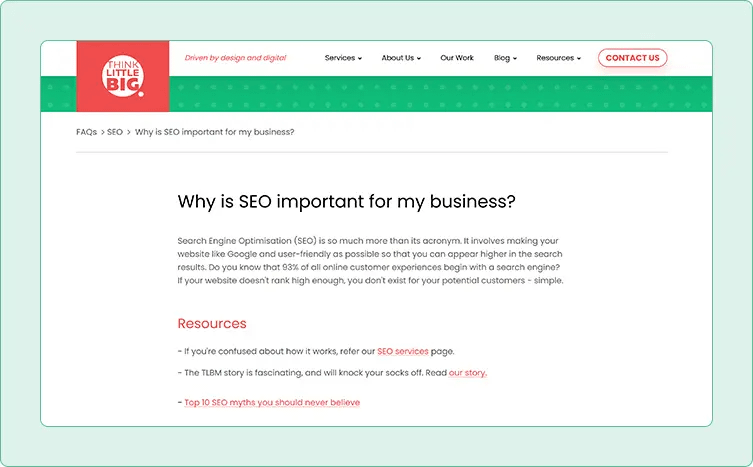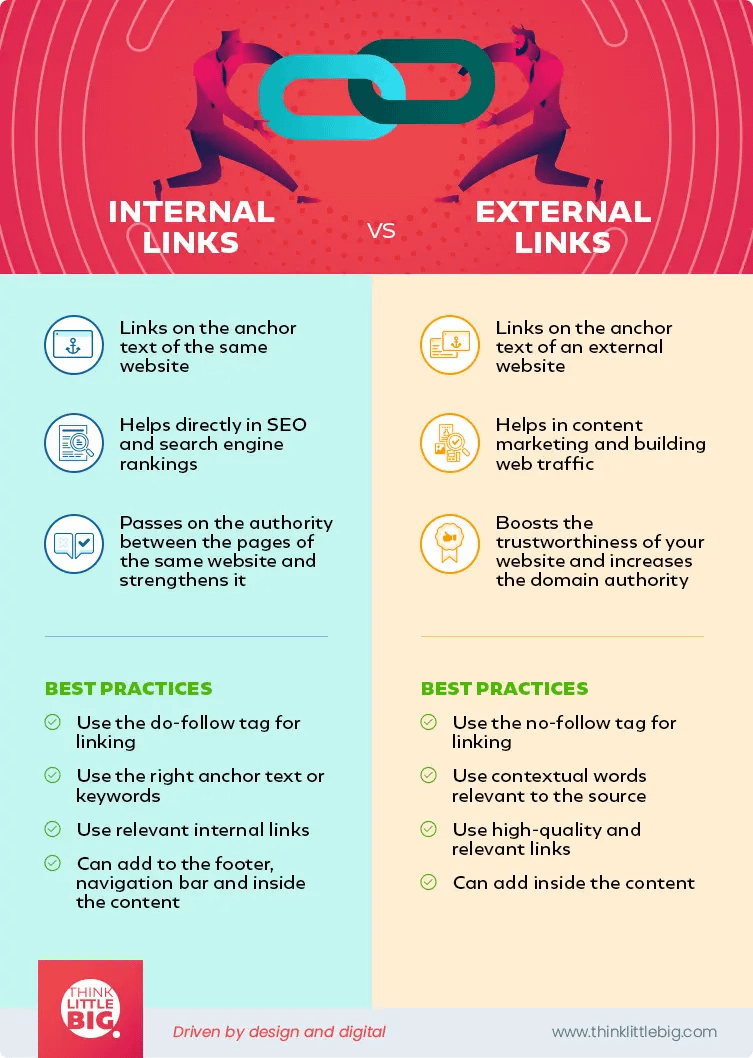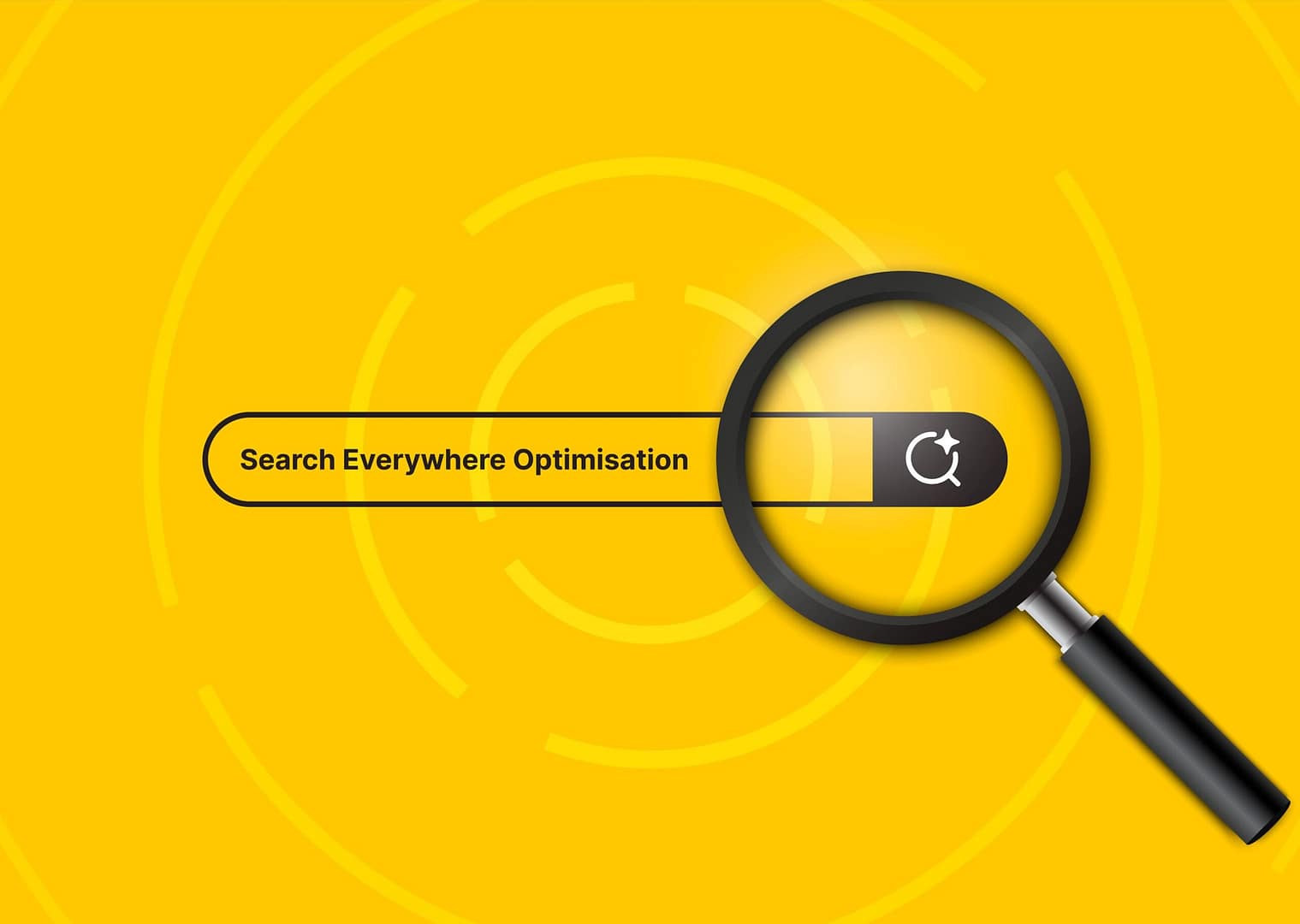You know I am going to share a secret with you. Well, it’s not exactly a secret. Still, most businesses don’t do this. So, the big secret is – you can execute a smart website linking strategy to boost your website SEO performance, if only you understand the fundamental difference between internal and external links. Intrigued? Let’s dig in:
Internal links vs external links
As the names suggest, internal links are URLs that point to the pages on the same domain, whereas external links are links of a third-party website. Both internal and external link structures play a vital role in your SEO strategy, traffic, and ranking.
Do internal links help SEO? Yes! How?
Your users love swift information and search engine values better user experience. Internal links help your users and search engines to understand the authority of your website’s pages and architecture.
If you have linked page 1 to page 2, which is relevant to page 1, then users can easily navigate from one page to another and don’t leave your website, confused. This maintains a balanced bounce rate of your website and improves the website’s visibility and ranking on SERPs (Search Engine Result Pages).
Internal linking SEO best practices
1. Use the right anchor text
The anchor text, i.e., the text of the hyperlink, should be specific and contain a relevant keyword that will help search engine bots understand your web page easily.
2. Do internal linking naturally
Internal linking should be user-oriented that provides value and information to your users. The more natural, contextual, and relevant it is, the more website visitors spend time on your website.

3. Use Dofollow links
Do-follow links pass on the link juice, i.e. the credibility of a page to another page to boost the ranking and improve the webpage’s authority. Using nofollow links is not advised in your internal content link strategy. The attribute “No-follow” doesn’t allow the link value to flow freely to-and-from internal pages.
The syntax to add a dofollow link is: ThinkLittleBig
4. Don’t add internal links to the footer
Don’t add keyword-rich links to the footer, instead add only the important pages about your company (such as service pages). Otherwise, it will look spammy and won’t add any value to your SEO strategy.
The USP of external links
When you add trustworthy, informative, and high-quality links of other websites to your pages, it improves your website’s credibility.
Inbound vs outbound links
Every external link can be either an outbound link or an inbound link. If you have hyperlinked an external website inside your content, then it’s called an outbound link. Inbound links are generally the backlinks that you get when someone links your website URL within their content.
External link best practices
1. It should be relevant and of high-quality
Always add links to your content from authoritative and relevant websites. Though it has no direct effect on ranking and SEO, it will boost the trustworthiness of your content.
If you add poor-quality, spammy links to your content, that will hurt your site SEO and demote it on search engines.
2. Build your network with it
Why? When you link to another site, make sure you leverage that opportunity through social media and email. Let the admin of the site know that you have mentioned them by giving their link as a reference.
You can tag them on social media or email them personally. That way, they are likely to return the favour by linking your site in their content or sharing your content on their social media. It is a great way to make connections to boost your content across all the channels.
3. Add a no-follow tag to it
Adding a no-follow tag to an external link will signal the search engine bots not to follow that link. No link juice will be passed on to that external website.
The syntax to add a no-follow link is: External link
Adding external links is a win-win situation for both websites. When you add a link of a third-party website to your content, your website will gain authority and trust. The third=party website, on the other hand, gets referral traffic and a backlink from your site that will boost its SEO.
Difference between internal and external links in SEO

In a nutshell
The world of marketing is evolving at a breakneck pace. Changing search algorithms, new tools, fancy strategies and tactics are being developed on a near-daily basis. It’s vital your business stays ahead of the curve, and that can’t happen unless you sort out of the basics of SEO! Of course, if you need help, I am happy to help! For any SEO-related enquiries, please email me at contact@thinklittlebig.com.
Rachel Smith is a communications executive who works with the content marketing team at Affable, an influencer marketing company that provides AI-driven solutions, allowing you to plan and execute your influencer campaigns strategically.
She develops content around social media and marketing topics that can help her readers understand how to pick the right influencers, measure their impact, and run effective influencer campaigns. In her free time, she loves meeting new people and attending workshops on communication and psychology.


